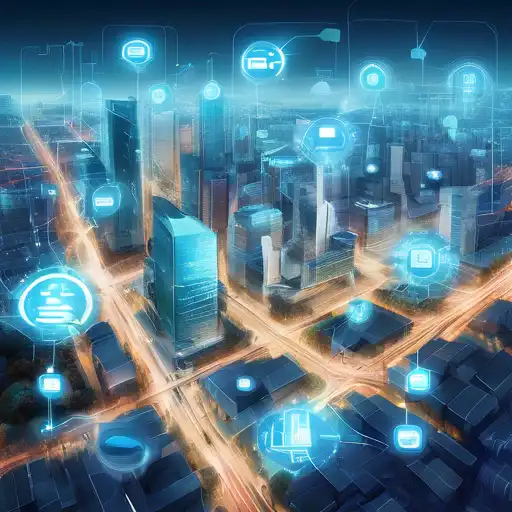Introduction to IoT in Smart Cities
The Internet of Things (IoT) is revolutionizing the way urban areas operate, making cities smarter, more efficient, and more sustainable. By connecting devices, vehicles, and infrastructure to the internet, IoT enables real-time data collection and analysis, leading to improved decision-making and quality of life for residents.
Key Components of IoT in Smart Cities
Smart cities leverage IoT technology across various sectors, including transportation, energy, and public safety. Here are some of the key components:
- Smart Transportation: IoT enables traffic management systems to reduce congestion and improve public transportation efficiency.
- Energy Management: Smart grids and meters help in optimizing energy use and reducing waste.
- Public Safety: IoT devices like surveillance cameras and sensors enhance security and emergency response times.
Benefits of IoT in Urban Development
The integration of IoT in smart cities offers numerous benefits, such as:
- Enhanced efficiency in city operations
- Reduced environmental impact through sustainable practices
- Improved public services and citizen engagement
For more insights on how technology is shaping urban areas, check out our article on Digital Transformation in Urban Planning.
Challenges and Solutions
Despite its advantages, the implementation of IoT in smart cities faces challenges like data privacy concerns and high infrastructure costs. However, solutions such as robust cybersecurity measures and public-private partnerships can help overcome these obstacles.
Future Prospects
The future of IoT in smart cities is promising, with advancements in AI and machine learning further enhancing its potential. As cities continue to grow, IoT will play a pivotal role in ensuring they remain livable and sustainable.
Discover how AI is transforming urban management to complement IoT efforts in smart cities.
Conclusion
The role of IoT in smart cities is undeniable, offering a pathway to more efficient, sustainable, and livable urban environments. By addressing the challenges and leveraging the latest technologies, cities can harness the full potential of IoT to improve the quality of life for their residents.
